Beth Kephart's Blog, page 179
June 22, 2012
Small Damages, Excerpt (and a contest to come)
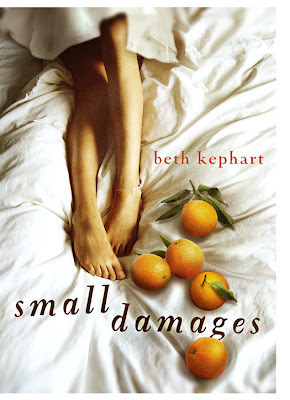
The release of Small Damages is just a month away. This morning I'm sharing this brief excerpt. Look for a contest next week. I'll be giving away four hard copies. The trailer is here.
Outside the sky has grown stormy in one distant corner.
The sun still shines on everything else. “I know a place,” she tells me. “Not
far.” Through narrowness to broadness, up a wide plateau of stairs, she walks
and I walk with her. She opens the door. She waits.
It takes time to adjust to the darkness—to find the
stained-glass windows high above the smoke stain of incense and wax. “Eighty
chapels,” she says, “in this one cathedral.” When she steps ahead on the marble
floor, her heels strike bright, hard echoes. When I breathe, it’s the smell of
oranges and crisp.
The nave is giant, endless, stoned in. The pews are worn
and settled. Everything is carved into a million dimensions—it’s hanging, it’s
suspended, it’s on a pedestal looking down. Adair slides into a pew, and I join
her. Two pews ahead, three women veiled in black kneel side-by-side, hands
against hands in prayer. Near to them, across the aisle, a Japanese man is
tripoding his camera, and in between the legs of the tripod, a kid races a toy
car across the tiles.
“It’s my favorite place,” Adair says, “in all of Spain.” I
think of Miguel and the Necropolis. I think of vanishing. I look past Adair to
the stones that hold the space away from itself. I watch the candles burning
and the Christs—Christ after Christ. A thousand of them. Tourists slide up and
down the aisles. The women pray. Someone sings, and someone else measures the
length of the song’s travels, and into the song beats the snap of the camera.
“What did Miguel tell you about me?” I ask her.
“That you’re smart, and a little pissed off.”
She smiles. “I’d be pissed off too,” she says. “To be honest.”




Published on June 22, 2012 02:59
June 21, 2012
Preparing to teach at the Philadelphia Museum of Art
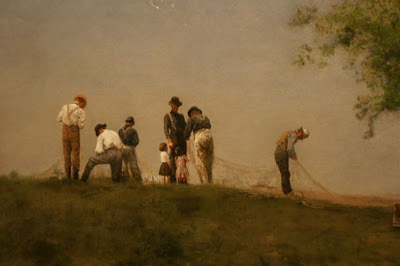
Later today I'll be on a train headed toward my city. I'll deboard at 30th Street and walk the hot mile or so to the Philadelphia Museum of Art, where I'll be meeting with Barbara Bassett, who invited me to teach in this year's VAST: Nature Through Lens of Art/Science program being offered to area teachers. We'll be reviewing the collections. I'll be hunting for source inspirations.
It is an honor to be included in this program, described in full here. I excerpt these lines from the online description:
Each summer the Philadelphia Museum of Art’s Education department
offers K–12 teachers of all subject areas the chance to immerse
themselves in the Museum’s collections and explore the special nature of
art and its use as a classroom resource.
The natural world serves as a source of inspiration for artists and
scientists, fostering inquiry
and enlivening the imagination. This one-week seminar explores nature
through the lens of art and science and discovers the intersections
between the two disciplines. Lectures by curators and invited scholars
and gallery sessions with Museum Educators enable the examination of a
range of art from different times and places, including
seventeenth-century Dutch still lifes, Japanese scrolls, Hudson River
School paintings, and twentieth-century environmental works of art.
Special visits to area institutions the Barnes Foundation and the
Academy of Natural Sciences further supplement this seminar’s
coursework.
Through lectures, small-group gallery discussions, writing, and hands-on
art workshops, participants will engage in approaches and activities
that can be used both in the Museum and in the classroom to promote
looking, thinking, and writing. Sessions will be led by Museum
Educators, guest speakers, and artists. Teachers will be grouped into
elementary, middle school, and high school work teams to facilitate
meaningful discussion and brainstorming of
curricular connections.
All VAST participants will receive a resource guide with background
information of artworks, discussion questions, and writing connections
to bring back to the classroom.
[image error]




Published on June 21, 2012 04:36
June 20, 2012
choosing the lesser life
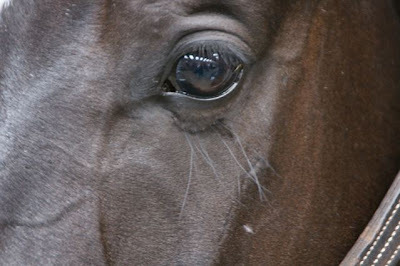
There comes a time when you realize that you are doing
more harm than good with all your crazy late nights, your too-early
mornings, your pushing through, your endless yeses. So your house is
clean and the laundry is done and meals appear, from somewhere. So
what? So you finish all the projects that you took on, you finish most
ahead of time, you finish, triumphant, but really, why so many
projects? So you make a checklist, a physical checklist, and you
furiously bam things off, one thing after another: see? see? see?.
What were you thinking—or not thinking? Is life some kind of
competition? Are you racing anyone but yourself? Does it matter?
Do you realize what you have been doing to a body that was not made for this?
Do you know what the consequences are?
Over the last two
months I have had my comeuppance—a body in revolt. I have, also, been
exceedingly lucky. I've had some lessons to learn. I have learned
them. I have had to make some choices. They are getting made. Less of
this, thank you. And less of that. And more time with friends. And
more laughing with my husband. And more living right now, as opposed to
waiting for later. And more dark, cool evenings, just hanging out,
listening to my son. (He tells me stories. He cautions me. He makes
the world's most perfect sense.)
I like the sound of a lesser life. I'm privileged to be able to choose it.




Published on June 20, 2012 19:25
Vaddey Ratner, a distinguished and compassionate new voice

This August, readers will be introduced to Vaddey Ratner, a new and important advocate not just of story, but of compassion. I had the opportunity to see Ratner speak at the BEA on a panel facilitated by Ron Hogan. She struck me then as the real thing—unpretentious, honorably motivated, deeply committed to unveiling the Cambodia of her childhood. There was terror, then. There was great loss. There was abominable sacrifice. But there was also beauty, and Ratner, who came to the United States in 1981 as a child refugee speaking no English, has spent years parsing together a story that, if closely aligned with her past, does pretend to mirror it precisely. Fiction, not memoir, is the right choice here.
When Ratner spoke of Michael Ondaatje as one source of literary inspiration, when she talked about leaving room to understand, when she asserted her decision to learn writing primarily through reading (as opposed to allowing others to shape her voice), I knew I would have to read In the Shadow of the Banyan. I am doing that now. I am seventy pages in. I know, already, that Ratner is the writer she worked so hard to be.
I will have more to say when my reading is done. This morning I quote from an early page. The colors of a Cambodian garden, pre-Khmer Rouge, through the eyes of a seven-year-old child:
A tiny pale pink butterfly, with wings as delicate as bougainvillea petals, flew up from the gardens below and landed on the railing near my face. I stilled myself. It heaved as if exhausted from its long flight, its wings opening and closing, like a pair of fans waving away the morning heat. Mama? In one of her guises? No, it was what it appeared to be—a baby butterfly. So delicate it seemed to have just emerged from a chrysalis.




Published on June 20, 2012 06:31
June 19, 2012
Alexander McQueen/Savage Beauty: The Metropolitan Museum of Art Catalog
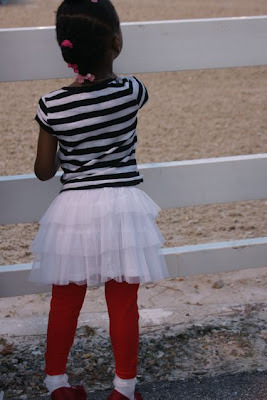
Momentarily (for a morning) between projects, I steal an hour with one of the gifts I gave my husband this past Father's Day. Assembled by The Metropolitan Museum of Art and distributed by Yale University Press, Savage Beauty, the retrospective look at Alexander McQueen's unmatched fashion career, bears down on you with its monstrous, lovely glory. Nothing impresses me more than a form-breaking designer; McQueen was that and he was also more—an impeccable tailor, a performance artist, a poet, a political observer, an historian, a very public man with very personal ideas. His early death was tragic.
I think McQueen would have appreciated this little girl's fabulous sense of style, and so I place her here, beside one of the many quotes that floats throughout this magnificent, cloth-bound catalog.
Birds in flight fascinate me. I admire eagles and falcons. I'm inspired by a feather but also its color, its graphics, its weightlessness and its engineering. It's so elaborate. In fact I try and transpose the beauty of a bird to women.
— Alexander McQueen




Published on June 19, 2012 07:22
A Daily Portion on Seeing Past Z (beautiful)
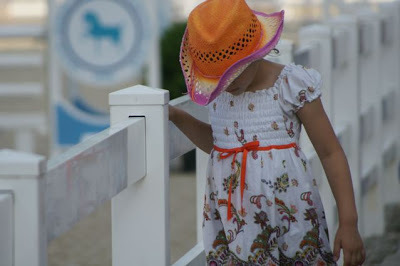
As many of you know, I submitted the first full draft of Handling the Truth to the Gotham team yesterday. Slipped the pages toward Lauren Marino who will, I know, bring her great mind to the work, to the ideas.
Just as I was in the process of doing that, I received a beautiful email from a mother, prayerful soul, and blogger about Seeing Past Z, a memoir I published years ago. Seeing Past Z was motivated by my hope, as a mother, that we might yield to our children more time to imagine, more time to be. It was inspired by the years I spent reading and writing with my son and, ultimately, with the children who began to come to my home to explore stories and their making.
It was, I'm saying, my first book about words, and Missy K was delivering it back to me on a blog she calls A Daily Portion. Her ruminations on this book, and her careful reporting on my own life since it was published, are so quietly, so compellingly rendered. They touch me deeply.
I share them with you today, with the hope that you will make A Daily Portion part of your daily habit. It will be worth your time.




Published on June 19, 2012 04:28
June 18, 2012
The Blue-Eyed Horse. The grace of youth.
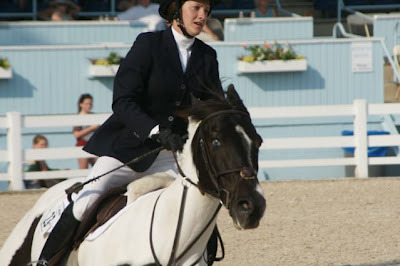
Things haven't been altogether "ordinary" in my world of late. Small concerns accumulating into larger ones, and whatnot. I have felt a bit like this blue-eyed horse. Not quite right but fiercely committed to, well, tomorrow and the day after that.
So that it gave me great comfort today to reach out to some of my former students—to ask for permission (official permission) to share excerpts of their work in HANDLING THE TRUTH, my memoir-making book. I could not exaggerate these students' beauty, nor their very essential-ness. I couldn't be more excited about bringing out a book that consecrates, in part, their talent. A teacher steps into a classroom and the gifts come roaring at her. These students, all of my students, have been gifts, so exponential.
As is, of course, my son. Here at home applying for jobs, building his portfolio, contemplating the creation of a blog. Several times today he left the room where he works to join me in the room where I work, simply and only to say, "Hey. I love you."
I have been given so much in this life. I am gigantically aware of my blessings.
The grace of youth.




Published on June 18, 2012 19:00
The Rules of the Tunnel/Ned Zeman: Reflections
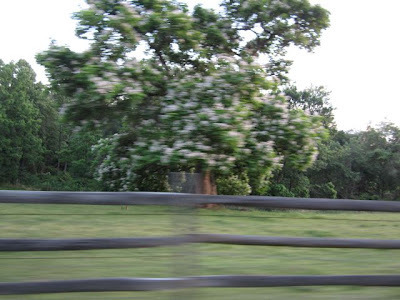
I have, as many of you know, been on a hunt for extraordinary memoirs. The equally inventive and true kind of memoir. The it's-not-really-just-all-about-me. This weekend alone I went through several would-be memoir contestants. I emerged holding just one high above my head.
(Victory.)
It's called The Rules of the Tunnel: My Brief Period of Madness. It's by Ned Zeman, whose work you might have seen in Vanity Fair or GQ or Outside. He's a reporter—witty and smart—but he's also dogged by the demons of depression. Anxiety gnarls at him, too, worries that escalate over time. And as therapy of the medicinal as well as the talking kind fail to relieve him of a paralyzingly dark stupor, Zeman turns, with hope, to electroconvulsive therapy.
The madness doesn't quell; it escalates. Mania ensues. Zeman will barely remember a bit of it, for amnesia has swept in, too.
Told in a fantastic, sometimes bawdy, reliably funny (yes, funny), deeply intelligent second person, The Rules of the Tunnel is not just a reconstructed life. It's a book that looks out for others along the way—defining, cautioning, placating—all while offering a behind-the-scenes glimpse at the doings of Vanity Fair, the collective care of friends, and the investigative tools that must be brought to bear on the telling of a life that is not, in large swaths, remembered. I am head-over-heels for the final lines in this book, but it wouldn't be fair to quote them. So I will give you the equally fantastic first bit of a book that is just this good in its entirety:
Not so long ago, in the heyday of your idiocy, you made yourself a promise. That you can no longer remember making the promise, nor anything about it—aside from a yellow sticky-note reading "Remember Promise!"—fills you with the warm glow of achievement. You lived, if only briefly, among The Great Amnesiacs. And you did live well. Reportedly.
The Rules of the Tunnel is, I will add here, a Gotham publication, acquired by Lauren Marino. I always sensed that I, with Handling the Truth, was in good hands. Now I know for sure.




Published on June 18, 2012 10:43
June 17, 2012
HANDLING THE TRUTH, a depiction in chalk

There she is, full of color and ideas. There is that foot (upper left) trailing away. That was me today, at work on more pages for HANDLING THE TRUTH. Not just the girl with her hand in the box of color, but the foot skipping away.
[image error]




Published on June 17, 2012 16:29
Dusk. Goodbye.
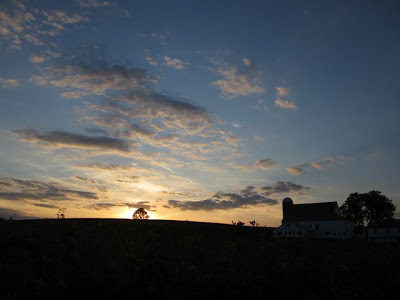
Last night we gathered to celebrate dear Annika, who has spent more than eleven years in our country, but will soon be returning to her home, Germany. She has danced, gardened, walked, taught, and loved us with her beautiful green eyes. We have loved her back. I glimpsed this scene as we drove away from her party last evening. I asked my husband to stop so that I could take a quick shot.
Annika, this beauty is for you.




Published on June 17, 2012 09:54



